Dutch photographer Jan van Ijken spent the past several years watching humans interact with animals in a range of settings—from research labs and factory farms to exotic bird shows. The result is a series of remarkable images documenting the shifting and ambivalent ways we value other creatures.
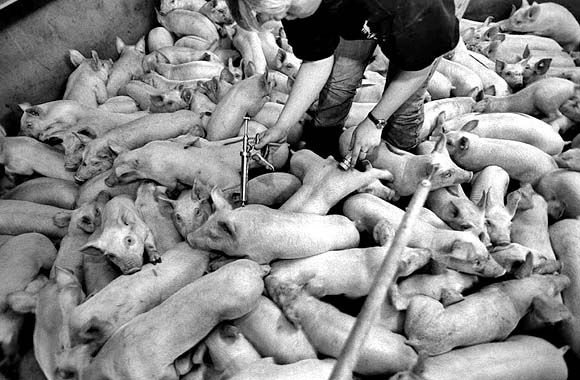
Inoculating piglets against lung disease.
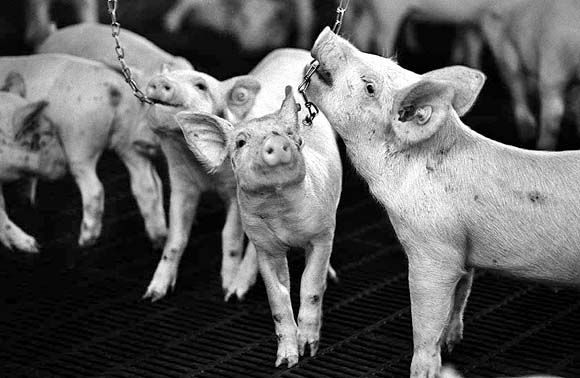
To keep them from biting each other, pigs are given chains to chew.
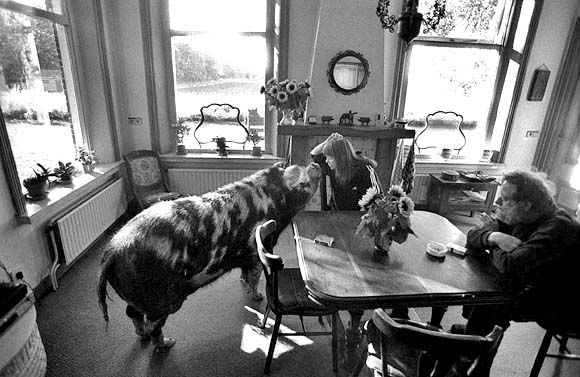
A 9-year-old sow at “Hog Heaven,” a project that connects people with pigs.
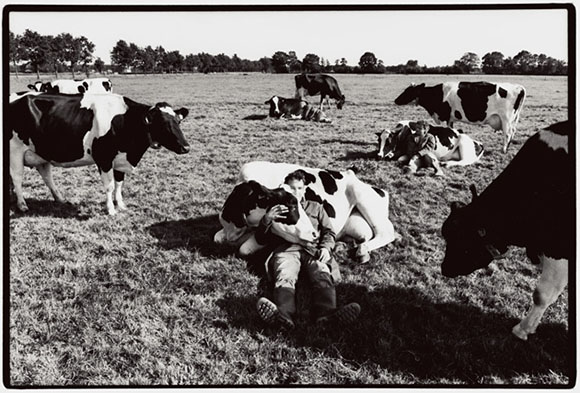
Amsterdam police officers cuddle cows as part of a stress therapy workshop.
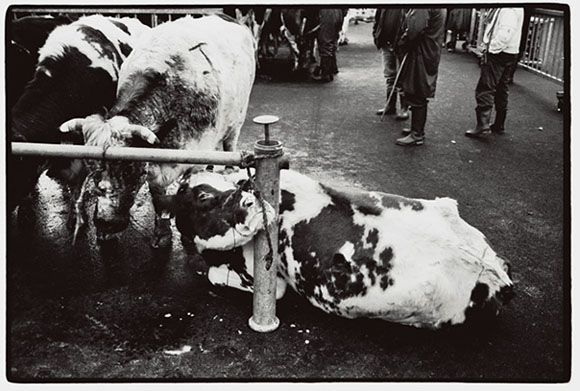
Cattle waiting for slaughter.
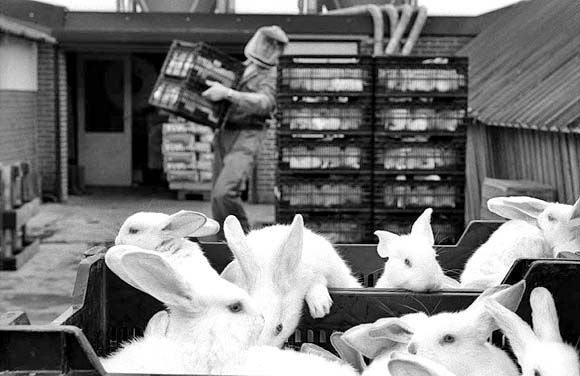
Breeder rabbits in transport.
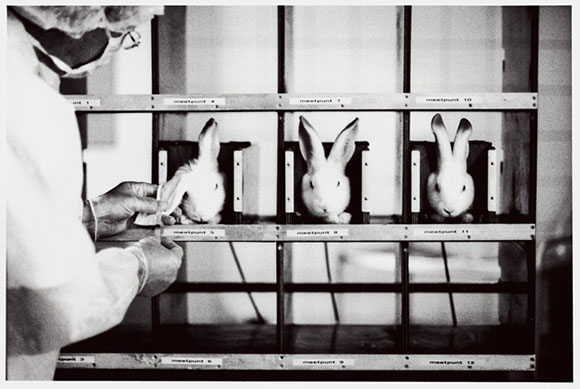
Injecting rabbits with vaccines in a research lab.
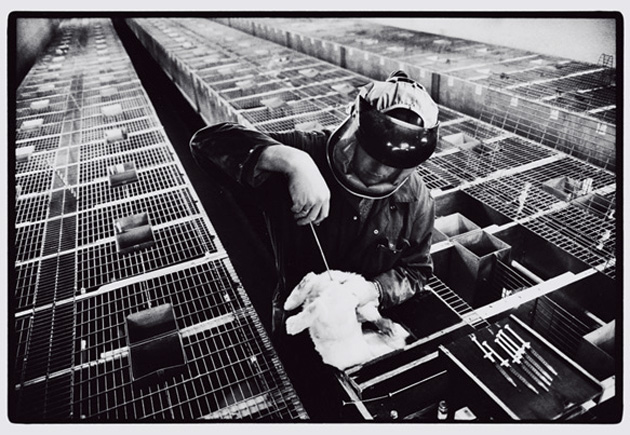
Artificially inseminating a rabbit. A breeding farm can produce 100,000 rabbits a year.
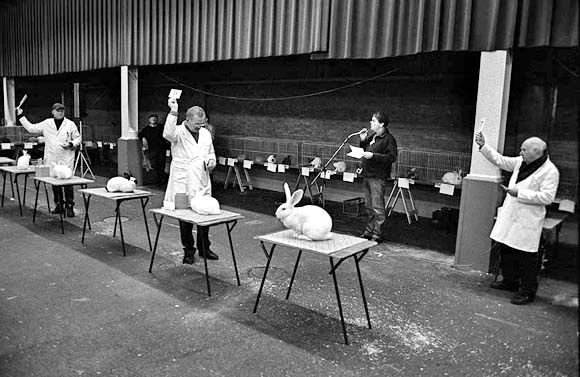
Judging rabbits at the Netherlands Association of Rabbit, Guinea Pig, and Rodent Enthusiasts show.
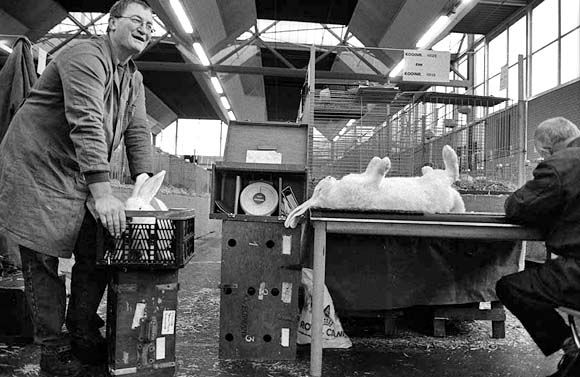
Inspecting rabbits.
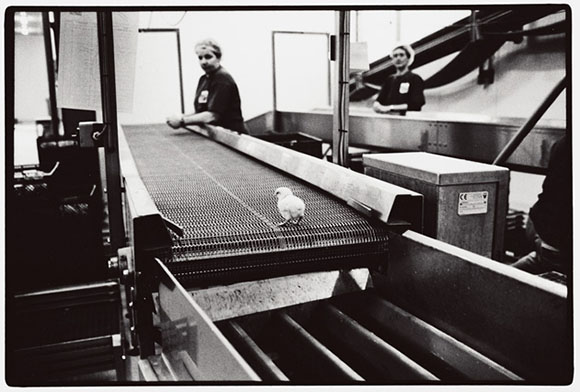
Poultry plant workers examine chicks for defects. (This one passed.)
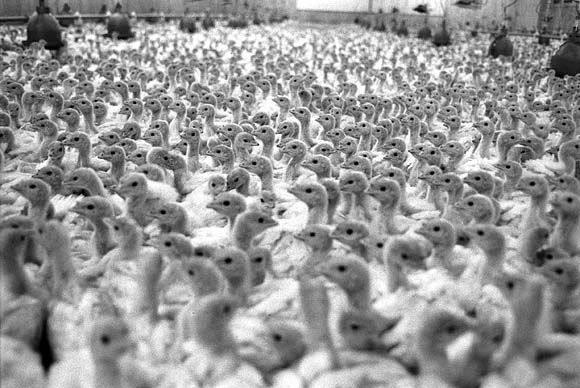
18,000 turkey chicks are housed in this shed.
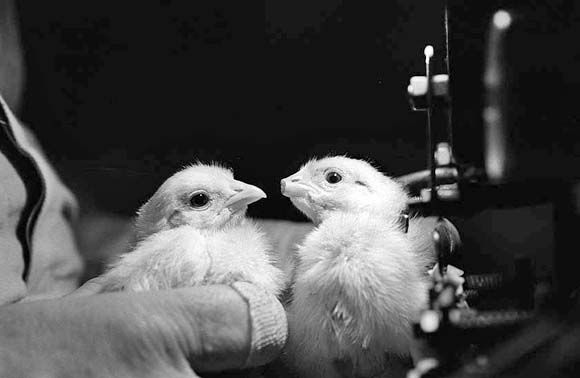
Chicks’ beaks are clipped to prevent them from pecking at each other.
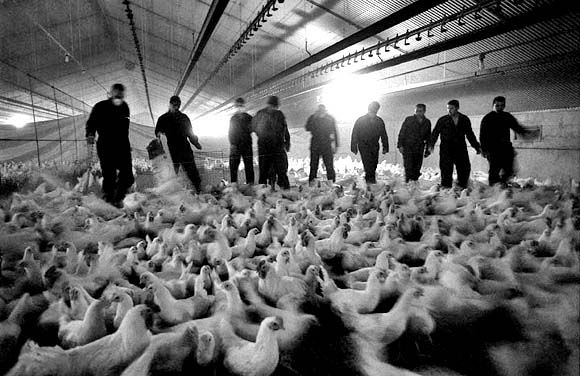
Collecting chickens.
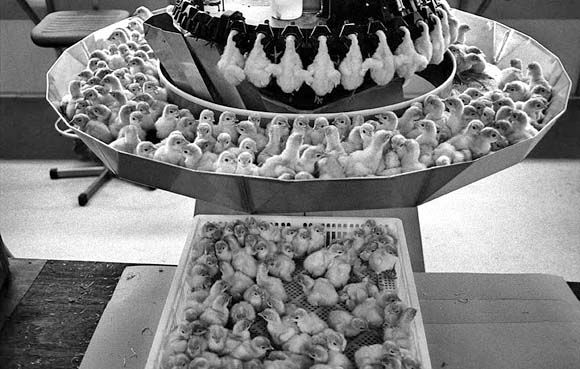
Considered more humane than singeing, chicks’ beaks are removed with an infrared beam.

Newly hatched ducklings on a conveyor belt. This plant handles 35,000 ducklings a day.
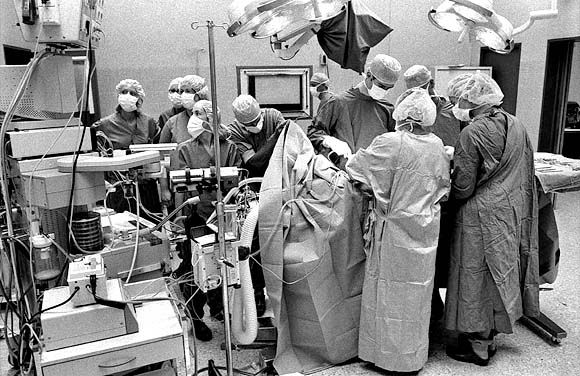
Operating on a cat.
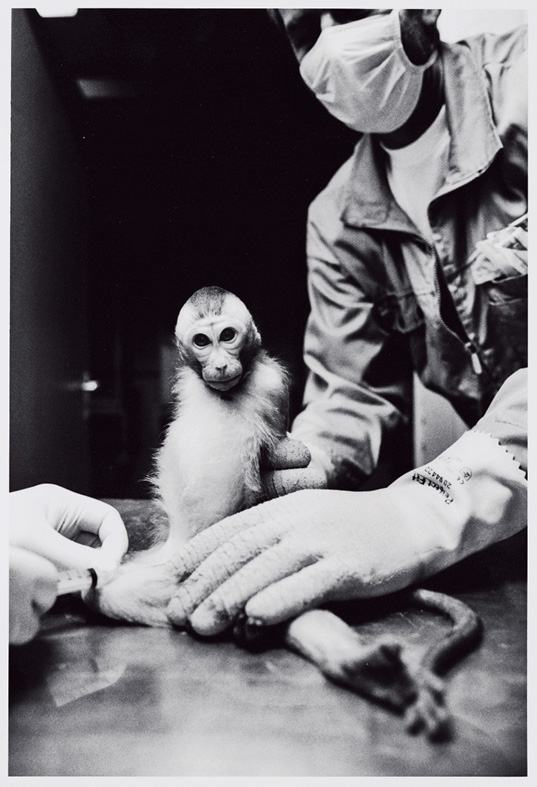
Drawing blood from a macaque monkey in a vaccine lab.
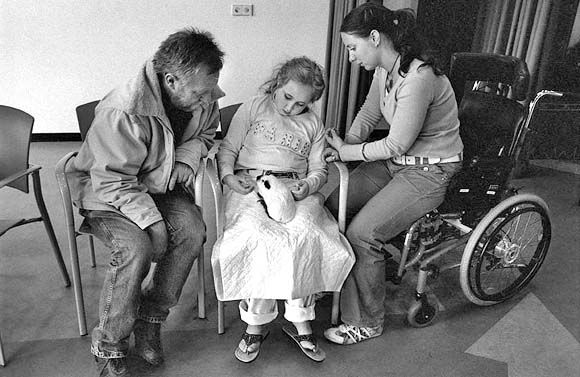
A sick child gets a visit from a guinea pig.
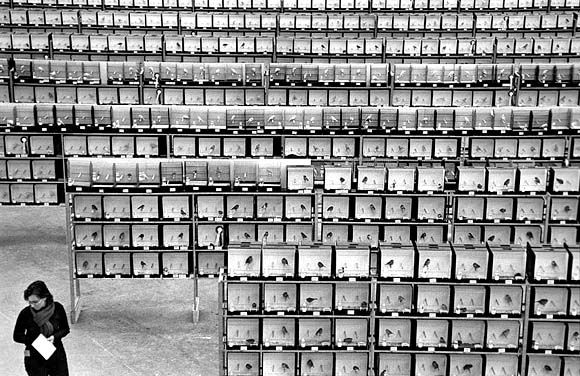
11,000 pedigreed birds are displayed at this annual show.

Attending to a rescued seal.
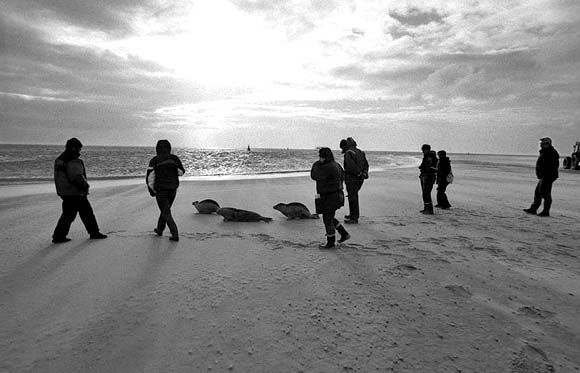
Rescued seals are released into the ocean.
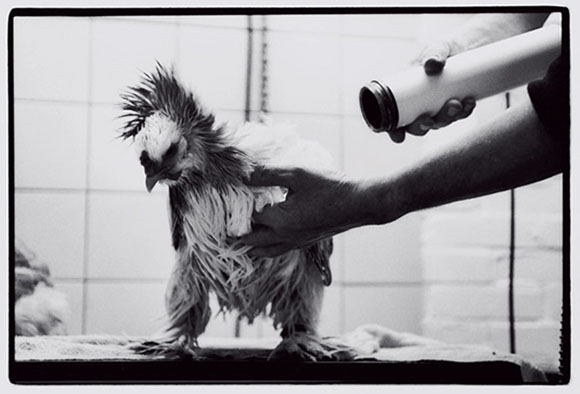
Grooming a prize Brahma chicken for competition.
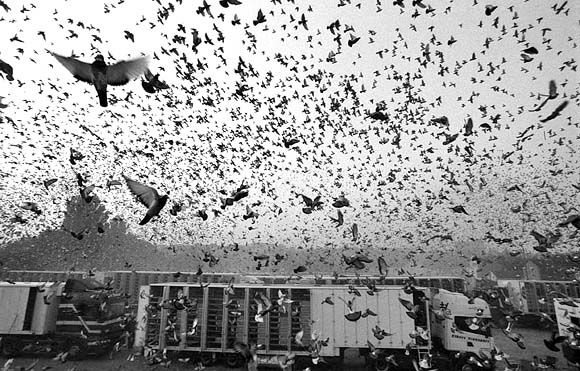
Over 120,000 homing pigeons are released to celebrate the 75th anniversary of the Netherlands Homing Pigeon Keepers Association.





































